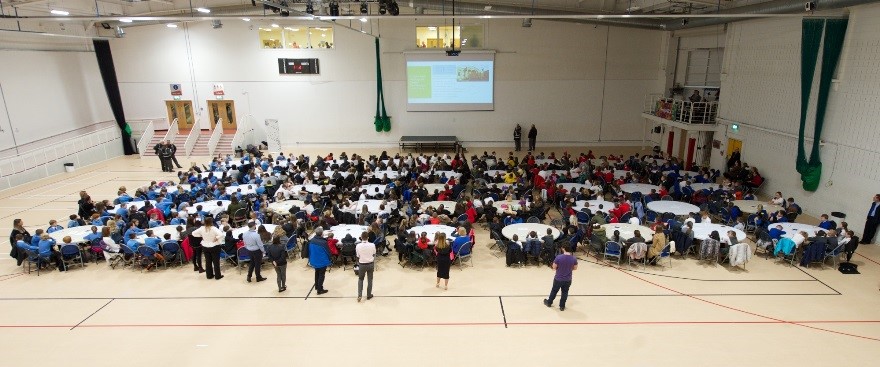With 110 listed buildings in the area, Paisley bows only to Edinburgh in its architectural significance in Scotland, and pupils had the chance to learn from architect Darren Keddie about Coats Observatory, the recently-renovated Russell Institute and the historic Paisley Abbey.
WCS Lecturer in Computing Amanda Ford showed the pupils how to recreate architecturally important buildings, in this instance Coats Observatory, using Minecraft, with the aim of inspiring some future architects in the process.
The kids were then given the opportunity to design the Observatory for themselves using squared paper before David Renton, WCS Curriculum and Quality Leader for Computing, demonstrated how to use co-ordinates and code to quickly construct a building within the game.

The pupils thoroughly enjoyed the experience - read what they say:
"I really enjoyed learning about how to create the buildings from Minecraft. I’m really looking forward to learning about how to use the coding to create buildings of my own during coding clubs." - Mikey Sinclair
"I really enjoyed it because it teaches us new subjects like architecture and programming and does it in a way that we know what they mean." - Finn Meechan
"I loved it because of the interesting facts about Paisley’s architecture and seeing some buildings from Paisley on Minecraft." - Cara Gray

Teachers also found the event very enriching for their pupils, as Lucy Scollen, Principal Teacher, points out:
It was a great experience for our pupils to take part in such an exciting event. So many of our kids are keen gamers and today allowed them to make connections between the virtual world and their hometown as they support Paisley’s bid for city of Culture 2021.

Partner organisations were delighted by the outcome of the event.
Jean Cameron, Paisley 2021 Bid Director, said: “Through Paisley’s bid for UK City of Culture 2021, we’ve been putting Paisley on the map locally, nationally and internationally, and I’m delighted the town now has a world record to its name.
Paisley has some world-class architecture and utilising this for digital learning is an excellent concept to engage the younger generation, especially using the extremely popular Minecraft game.
The legacy of our bid will be felt by the pupils who took part in this world record attempt so it is important we teach them about the history of Paisley to allow them to develop a passion for the area which they will carry into later life.
As part of the world record, each school will receive ‘Minecraft for Education’ to use as a tool to teach their pupils as well as the creation of after-school Minecraft coding clubs, with help from staff and student STEM ambassadors.
Audrey Cumberford, WCS Principal & Chief Executive, said:
This World Record is an excellent way to showcase the rich cultural heritage of Paisley on an international scale.
It is also a fantastic opportunity to get youngsters enthused about architecture, design and computing – hopefully helping them become the builders of our future.
This initiative by West College Scotland’s computing department blends in perfectly with the coding clubs they are delivering in local schools throughout the year, to form the next generation of digital experts.

The previous best was set by Scottish-born teacher Stephen Reid, who used Minecraft to teach a crowd of 341 students about historical architecture in Pennsylvania, USA.
The attempt will be sent for verification to Guinness before being confirmed as the new world record.

